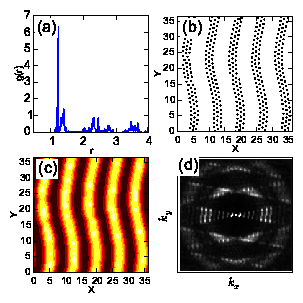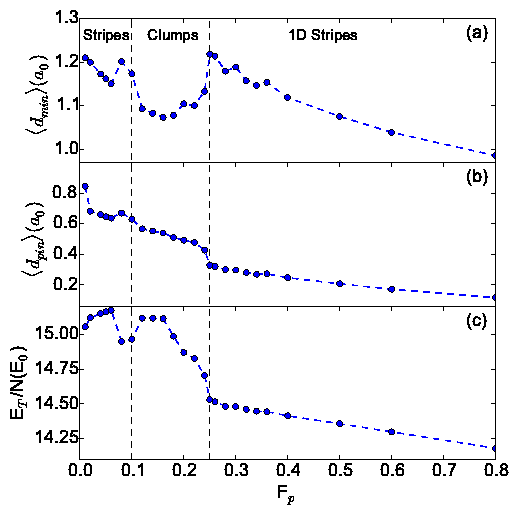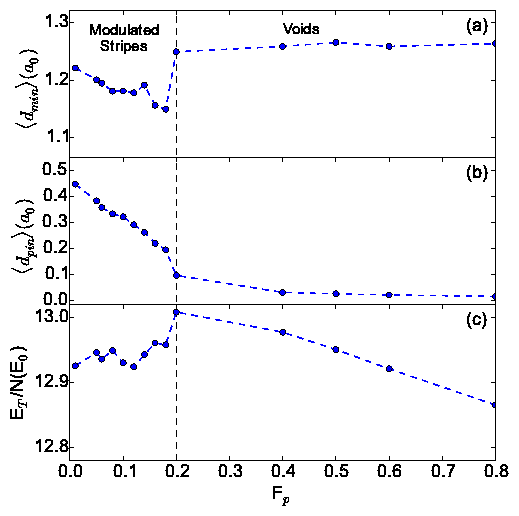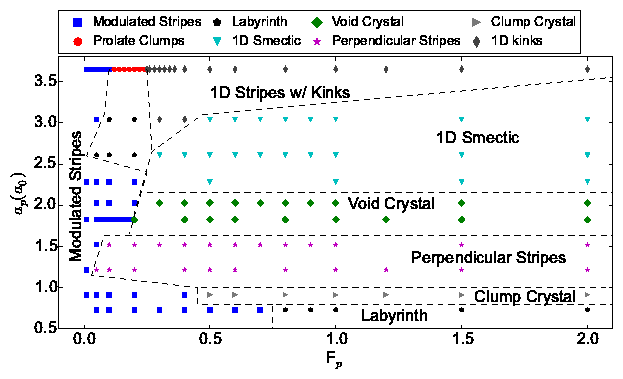 Fig. 3:
Real space particle positions (left column),
S(k) (central column), and density plots (right column)
for stripes ordering
on a periodic q1D substrate with troughs aligned in the y direction
for a system with ap = 3.65a0 and ρ = 0.3.
(a,b,c) Aligned stripe phase at Fp = 0.05.
(d,e,f) Modulated stripes at Fp = 0.08.
(g,h,i) Prolate clump phase at Fp = 0.2.
(j,k,l) 1D kink phase at Fp = 0.8.
(m,n,o) Smectic phase at Fp = 2.0.
Fig. 3:
Real space particle positions (left column),
S(k) (central column), and density plots (right column)
for stripes ordering
on a periodic q1D substrate with troughs aligned in the y direction
for a system with ap = 3.65a0 and ρ = 0.3.
(a,b,c) Aligned stripe phase at Fp = 0.05.
(d,e,f) Modulated stripes at Fp = 0.08.
(g,h,i) Prolate clump phase at Fp = 0.2.
(j,k,l) 1D kink phase at Fp = 0.8.
(m,n,o) Smectic phase at Fp = 2.0.
|



